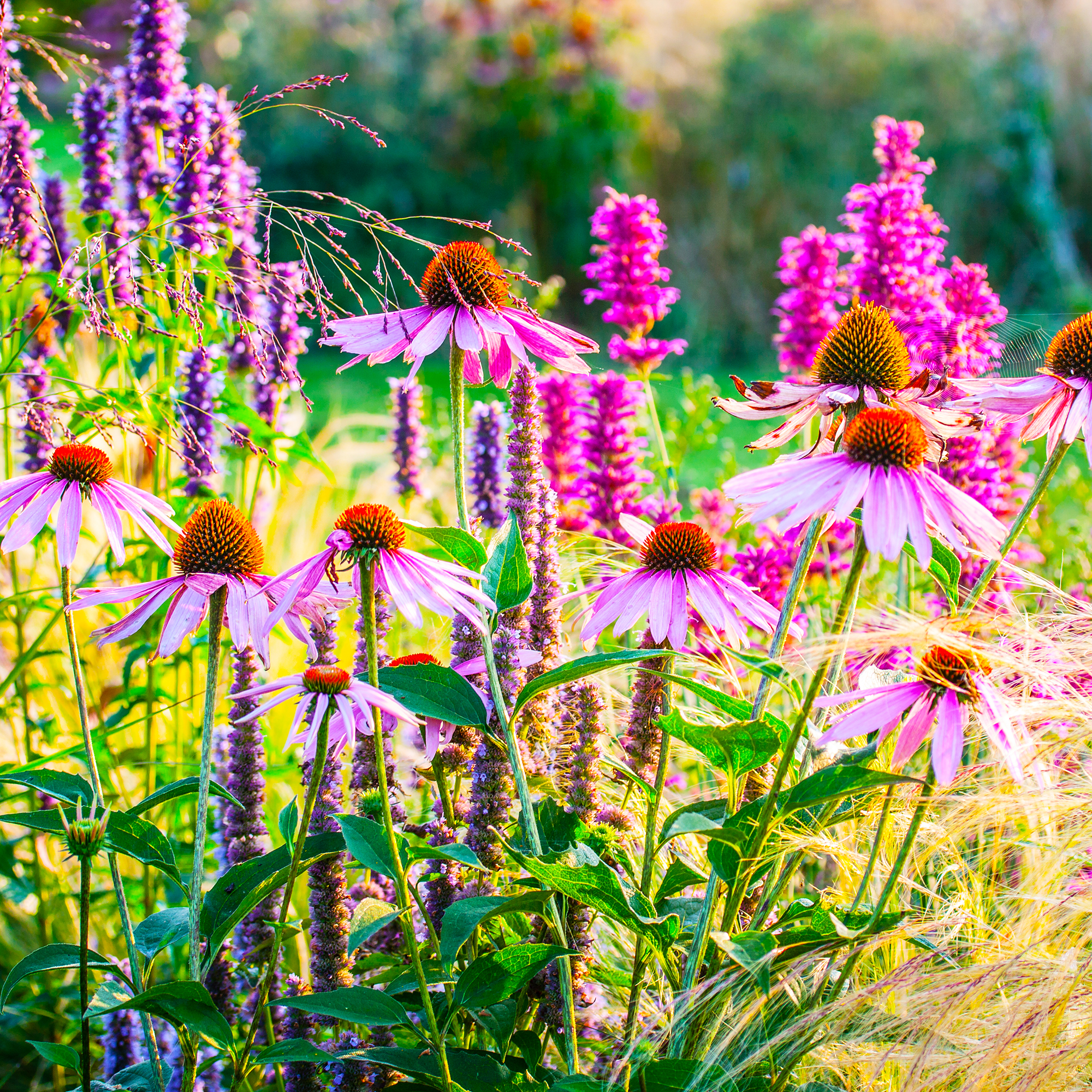Drought-resistant flowers are can be fun and relaxing. But sometimes, water is hard to find. When there is less rain, plants need a lot of care. Some flowers die quickly without water. Others, called drought-resistant flowers, can live with very little water. These flowers are perfect for dry places or hot weather. They save water and still make your garden look nice. In this article, we will talk about how to plant drought-resistant flowers. We will also list some easy flowers to grow. Let’s start!
What Are Drought-Resistant Flowers?
Drought-resistant flowers are plants that need less water than other plants. They have special ways to save water. Some have thick leaves to keep water inside. Others have deep roots that find water far underground. These flowers can live in hot and dry places. You do not have to water them every day. This makes them good for gardens in warm countries or places with little rain.

Credit: simplegardenlife.com
Why Plant Drought-Resistant Flowers?
There are many good reasons to choose drought-resistant flowers. Here are some:
- Save Water: These flowers need less water. This helps during dry seasons.
- Easy to Care For: They do not need much attention or watering.
- Good for Environment: Using less water helps nature and saves energy.
- Beautiful Garden: Many drought-resistant flowers have bright colors and nice shapes.
- Save Money: Less water means lower water bills.
How to Choose Drought-Resistant Flowers
Not all flowers are good for dry areas. You need to pick the right ones. Here are some tips:
- Check Your Climate: Know if your area is hot or cold. Some flowers like heat better.
- Think About Soil: Some flowers grow well in sandy soil. Others like rocky soil.
- Look for Native Flowers: Plants that grow naturally in your region are often more drought-resistant.
- Ask at Local Garden Centers: They can tell you which flowers work best near you.
Best Drought-Resistant Flowers to Plant
Here are some popular drought-resistant flowers. They are easy to grow and look great in your garden.
| Flower Name | Description | Water Needs | Sunlight |
|---|---|---|---|
| Lavender | Fragrant purple flowers and gray-green leaves. | Low | Full sun |
| Marigold | Bright yellow or orange flowers, easy to grow. | Low | Full sun |
| Blanket Flower (Gaillardia) | Red and yellow flowers that bloom all summer. | Low | Full sun |
| Yarrow | Flat flower clusters, comes in many colors. | Low | Full sun to partial shade |
| Russian Sage | Tall spikes of light purple flowers with silver leaves. | Low | Full sun |
| Salvia | Bright blue or purple flowers that attract bees. | Low | Full sun |
| Blanket Flower (Gaillardia) | Red and yellow flowers that bloom all summer. | Low | Full sun |
| Portulaca (Moss Rose) | Small, colorful flowers that grow low to the ground. | Very low | Full sun |
Steps to Plant Drought-Resistant Flowers
Follow these simple steps to grow drought-resistant flowers in your garden.
1. Pick A Good Spot
Choose a place with enough sunlight. Most drought-resistant flowers need full sun. Make sure the soil drains well. Water should not stay on the surface for long.
2. Prepare The Soil
Remove weeds and rocks. Loosen the soil with a shovel or fork. If soil is poor, add some compost. This helps plants grow strong.
3. Plant The Flowers
Dig holes a little bigger than the plant roots. Place the flower in the hole carefully. Cover roots with soil and press gently. Water the plant right after planting.
4. Water Properly
At first, water the flowers regularly. This helps roots grow deep. After a few weeks, reduce watering. Water deeply but less often. This trains plants to save water.
5. Mulch Around Plants
Put a layer of mulch around your flowers. Mulch stops water from evaporating quickly. It also keeps soil cool and stops weeds.
6. Care And Maintenance
Remove dead flowers to help new ones grow. Check plants for pests or diseases. If you see problems, remove affected parts. Most drought-resistant flowers need little fertilizer.
Tips for a Successful Drought-Resistant Garden
- Group Plants: Put drought-resistant flowers together. This helps with watering and care.
- Use Drip Irrigation: Water plants slowly near roots. This saves water and helps growth.
- Plant at Right Time: Spring or fall is best for planting.
- Choose Young Plants: Young plants grow faster and are easier to care for.
- Be Patient: Some plants take time to get used to dry soil.

Credit: www.womanandhome.com
Benefits of Planting Drought-Resistant Flowers
Planting drought-resistant flowers has many benefits. Here are some reasons why you should try it:
- Water Savings: Use less water and help your community.
- Less Work: Spend less time watering and caring for plants.
- Attract Wildlife: Many drought-resistant flowers attract bees and butterflies.
- Long-Lasting Beauty: These flowers bloom for a long time.
- Good for Hot Places: Keep your garden alive in hot weather.
Frequently Asked Questions
What Are Drought-resistant Flowers?
Drought-resistant flowers survive with little water. They thrive in dry conditions. Ideal for arid climates.
How Do Drought-resistant Flowers Save Water?
These flowers use minimal water. Their roots store moisture. Perfect for water conservation.
Which Flowers Are Best For Dry Climates?
Lavender, sedum, and yarrow. These flowers love dry, sunny spots. Perfect for low-water gardens.
Can I Plant Drought-resistant Flowers In Any Soil?
Yes, but well-draining soil is best. Helps prevent root rot. Promotes healthy growth.
Conclusion
Planting drought-resistant flowers is smart and simple. They save water and look beautiful. These flowers need less care and survive dry times well. Choose the right plants for your garden. Follow the steps to plant and care for them. Soon, you will have a lovely garden that uses less water. Enjoy the colors and scents without worry. Try planting drought-resistant flowers today!
5 min read

